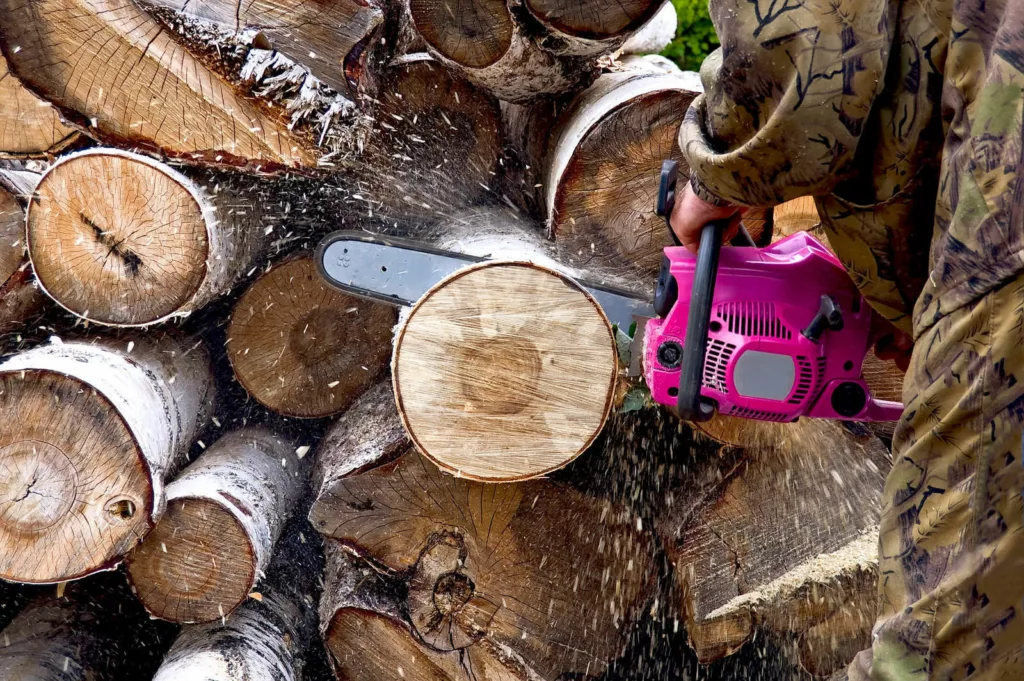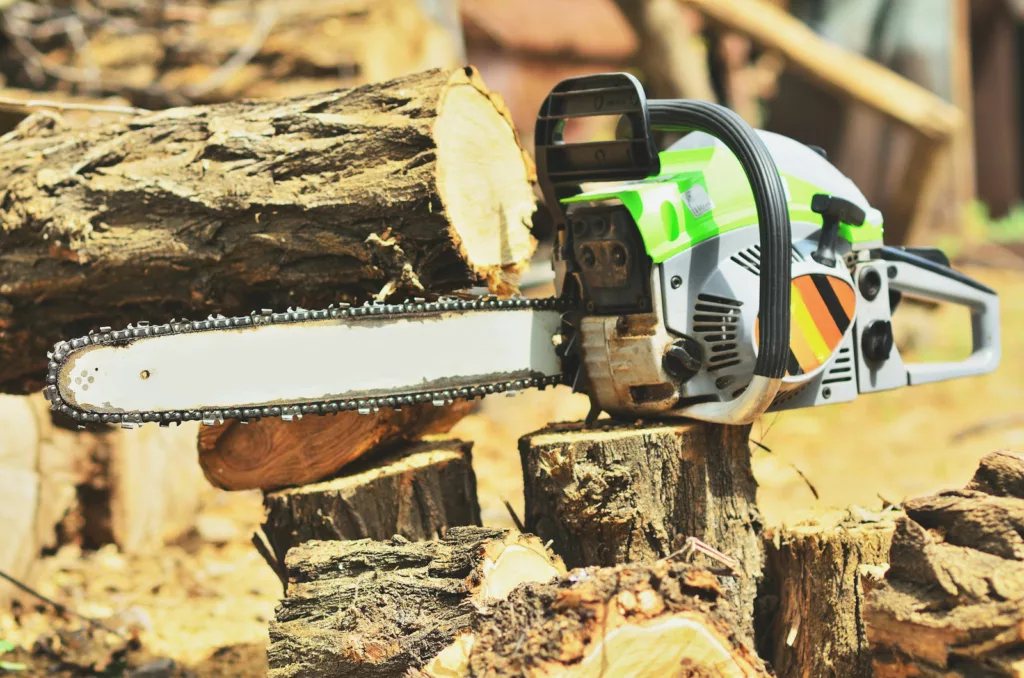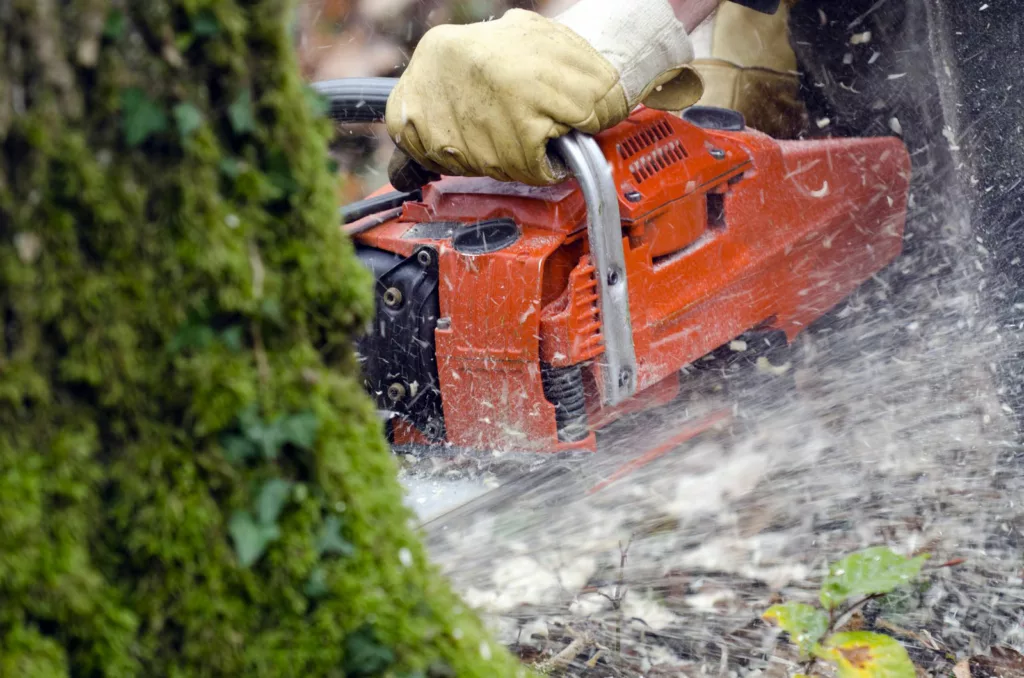While the debate between cutting dry wood vs. cutting wet wood using a chainsaw is often contested, only a thorough comparison of both wood states will ascertain which is more deteriorating to the chainsaw and which is safer.
The state of a piece of timber gives it some properties that will determine its effect on a chainsaw.
The fact that timber usually comes as dry wood has settled questions about using chainsaws on timber.
However, it raises concerns when conditions demand working on a wet piece of wood with the saw.
In this blog post, we will compare the properties of both wood states to see how they affect chainsaws during lumbering.

A man with a power saw cutting lumber
Is Cutting Wet Wood Bad For Chainsaw?
A quick answer to this recurring question is No. Contrary to popular assumptions, moist woods go easier on saws than dry woods.
Woods are better cut with the power saw when they are wet. Seasoned timbers are usually assumed to be easier on saws.
But dry lumber poses stronger restrictions to the action of the saw than damp wood.
The water in wet timbers lubricates the blade of the power saw. It reduces the level of friction opposing the movement of the saw through the surface of the wood.
However, air filters and exhaust do not easily blow off the sawdust produced when working on moist timber.
They may tend to clog up the blade of the chainsaw. Remove the dirt and clean the cutting part frequently to improve the lifespan of the saw.

A chainsaw lying in the stumps
Safety Tips You Need To Follow When Sawing Wet Woods
Some safety measures are necessary while working on fresh wood with the saw to avoid work hazards. Here are some safety precautions to consider:
Protective Gear
Your protective equipment (PPE) should include the following. Guard your eyes from flying debris with goggles.
Wear some boots, gloves, and anti-cut clothing to protect your body from injury.
Clear working space
Ensure your workspace is free of obstacles to avoid stumbling and falling over yourself with a running saw.
Remove tree branches from the way as you prune a tree trunk.
Avoided kickbacks
Kickbacks can occur when the moving chain at the nose of the guide bar comes in contact with a hard knot.
You can avoid this by inserting a safety tip to cover the nose of the guide bar on the saw.
Also, sharpen your saw blade to avoid kickbacks.

Man sawing down a tree with a chainsaw
Hold the chainsaw on your side
Holding the saw on the side will reduce impending damage in case of a kickback. Also, ensure to get a firm hold on the front and rear handles of your chainsaw.
Cutting Dry Wood Vs. Cutting Wet Wood Using A Chainsaw: Avoid slippery area
If the area around the wood is too damp, consider moving it to a more suitable area if possible.
If you can’t move the timber, then reschedule for a later time when the ground is more dry.
Place the blade horizontally.
Always place the blade’s sharp edge horizontally 90° to the lumber length.
Avoid using an electric chainsaw in the rain.
Electric gadgets don’t get along with water, including your chainsaw. Avoid using an electric saw under the rain or in very wet areas to avoid getting electrocuted.

A chainsaw in action
Conclusion
In summary, sawing moist timber with chainsaws demands less effort than sawing dry timber.
The moisture content in the wet timber serves as a natural lubricant for the chainsaw blade.
The lumber fiber poses great restriction to the sawing action of the chainsaw. Making it less easy to work on.
Another precaution when working on wet wood is to grease your saw blade with mineral oil. This will make sawing moist timber even easier.
